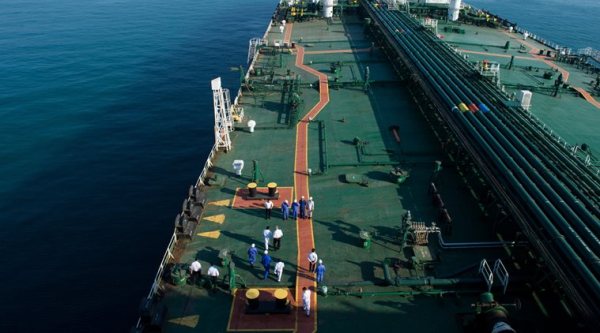The oil & rupee problem
A balanced approach can reduce petrol price without affecting revenues. RBI mustn’t artificially shore up rupee

Crude oil price in the international market may increase as the sanctions on Iran have become operative.
The Brent crude oil price has changed from around $68/barrel in January to $70/barrel on November 9, touching a high of $86 on October 3. The rupee has also fallen from Rs 63.30 per US$ in January to Rs 70 on November 9. These fluctuations have created major policy problems for the government. The consumers are agitated because of high prices of petroleum products. At the same time, the government is concerned about containing its fiscal and current account deficits.
Crude oil price in the international market may increase as the sanctions on Iran have become operative. While India has been given exemption from the sanctions by the US, the sanctions will affect the global oil market. India will be affected by higher oil price as India imports less than 10 per cent of its total imports from Iran, which may be paid in rupees. What should India do?
The retail price of petrol exceeds Rs 80/litre in many cities, causing much hardship to consumers many of whom are users of two-wheelers. The government has been reluctant to reduce excise tax as it will stress its budget. High price would encourage people to use less petrol, reduce unnecessary travel and promote use of public transport where it is available.
In October when the oil price reached $86/barrel the government cut excise duty by Rs 1.50 and asked the oil marketing companies (OMCs) to cut price further by Rs 1.0. Though the subsequent drop in crude price has reduced the burden on OMCs, this was a bad move. Going back to this regime of price control and subsidies is a serious mistake. Since the government would provide subsidy only to public sector undertakings, private firms would go out of retail business. This would reduce competition and lower incentives to public sector undertakings to be more efficient. Even more damaging would be the signal it would send to potential investors that government policies are uncertain, their perceived risk of getting into the oil sector in India would increase and they would be reluctant to invest in exploration or production. Our dependence on imports will grow.
The central government’s excise duty on petroleum products is specific and the rates do not change with the cost of crude import. However, state governments impose ad valorem value added tax, VAT, on excise and dealer commission inclusive cost. These rates vary from state to state with an average of more than 30 per cent for petrol with the highest rate of 39.12 per cent in Mumbai, Thane and Navi Mumbai. In fiscal year 2017-18, states collected Rs 1,80,000 crore as revenue from VAT on petroleum products. Oil price in India in terms of rupees had increased in October 2018 by nearly 28 per cent since March 2018. Even after the fall in crude price in the last month the price is still some 15 per cent higher.
The oil price increase has been a bonanza for states. With the increase in price of oil, the states’ expected annual revenues would increase by 10 per cent to 16.5 per cent depending on the way crude price and the rupee move, compared to what states would have projected for the budget in March 2018. Even with the reduced oil price to $70/barrel, the states would collect nearly Rs 20,000 crore more this year at the present VAT rates. Since the sale of petrol and diesel was around 13,500 crore litres in 2017-18, states are collecting nearly Rs 1.5 per litre extra. Thus states could easily reduce the VAT rates to cut down the price of petrol and diesel by at least Rs 1.5 per litre without greatly affecting their budget calculations.
The central government collected around Rs 2,29,000 crore from excise on petroleum products in 2017-18. If the excise duty rates are reduced by 10 per cent, that is, from Rs 19.48 per litre of petrol to Rs 17.50 and from Rs 17.24 per litre of diesel to Rs 15.50, the drop in revenue would be Rs 22,900 crore. A 4 per cent increase in GST rates from 5 per cent to 5.2 per cent, from 12 per cent to 12.48 per cent and from 28 per cent to 29.12 per cent will collect enough additional revenue so that the Centre’s share in it will compensate for the loss in excise revenue and provide states Rs 22,900 crore more as their share in the GST. They can further reduce VAT rates so that the retail price reduces by around Rs 4/litre.
Thus a balanced approach can reduce the retail price of petrol by around Rs 5 to 6/litre without affecting the revenues of the Centre or the states.
How do we deal with the increasing stress on the current account deficit (CAD) due to the rising oil price? Should the RBI intervene in the foreign exchange market to arrest the fall of the rupee?
Any attempt to artificially shore up the rupee can be counter-productive. As the RBI’s foreign exchange reserves deplete, the rupee becomes more vulnerable to speculative attacks. An artificially overvalued rupee can lead to capital flight. On the other hand, a weaker rupee will stimulate exports and discourage imports, moderating the pressure on the current account deficit due to the rising oil price.
Of course, to stimulate exports, along with a weaker rupee we also need to remove the bottlenecks that hinder exports today. Governments’ emphasis on improving roads and ports is helpful. Along with it, streamlining of governance is also necessary. The procedure for duty drawbacks and input credits needs to be simple and quick. Credit for exporters should be easier to obtain. These measures need not take time and the impact on exports should be visible soon. Apart from moderating the crude imports due to high prices, from a medium term point of view, we need to push energy efficiency by stricter fuel efficiency norms for vehicles, cellulosic ethanol from crop residues that are burnt today, public transport and electric mobility to reduce our need for petroleum products.
Apart from measures to boost exports and reduce imports, we need to impress upon the US government the vital importance for India of importing oil from Iran. The US should understand that a healthy Indian economy is in the interests of the US and must continue to provide exemption to India.
The writer is Chairman, Integrated Research and Action for Development (IRADe)
For all the latest Opinion News, download Indian Express App
More From Kirit Parikh
- Farm solutions for Delhi airBans and fines can’t stop stubble burning. Build a market for straw and it will be gathered and used..
- Take reform to fuelPrices of petrol and diesel will come down if states agree on a mechanism to levy GST for oil products ..
- Why we need nuclear powerSolar power may be price competitive, but it is subject to vagaries of weather..







































No hay comentarios:
Publicar un comentario